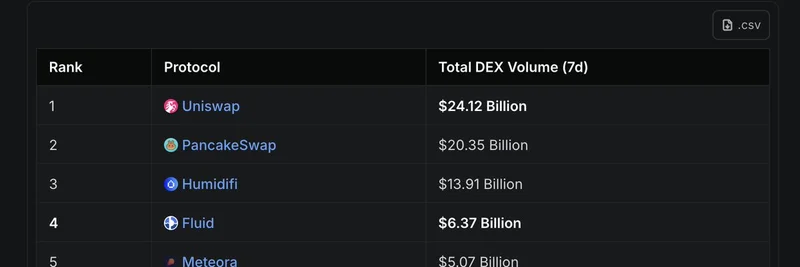Recently, BSCNews dropped a tweet that's got the crypto community buzzing: a complete guide to Kaspa L1 and its native $KAS token. If you're diving into blockchain tech or looking to level up your knowledge on emerging protocols, this is a must-read. The guide breaks down everything from Kaspa's innovative structure to its real-world potential, and we're here at Meme Insider to unpack it for you in a straightforward, engaging way. Whether you're a meme token enthusiast curious about underlying tech or a blockchain practitioner, understanding Kaspa could give you an edge in the fast-evolving crypto landscape.
What is Kaspa?
Let's start with the basics. Kaspa is a Layer-1 blockchain—think of it as the foundational layer where all the magic happens, similar to Bitcoin or Ethereum but with a twist. Instead of the traditional linear chain of blocks, Kaspa uses something called blockDAG (Directed Acyclic Graph for blocks). This setup allows multiple blocks to be processed at the same time, making it incredibly fast.
Launched on November 7, 2021, Kaspa had a fair start—no pre-mined coins, no pre-sales, just pure community-driven mining from day one. It uses proof-of-work (PoW), the same consensus mechanism as Bitcoin, which keeps things secure and decentralized. The name "Kaspa" comes from Aramaic words meaning "silver" or "money," positioning it as a speedy complement to Bitcoin's "gold." Right now, after the Crescendo Hardfork in May 2025, it's cranking out 10 blocks per second, with transaction confirmations in about 10 seconds. That's lightning-fast compared to older chains!
Key Features of Kaspa
What sets Kaspa apart? Here are the standout elements:
BlockDAG Structure: Unlike a single-file line of blocks, blockDAG lets miners create and add blocks in parallel. No more "orphan blocks" getting discarded—everything gets incorporated, boosting efficiency.
GHOSTDAG Protocol: This is Kaspa's secret sauce, an upgrade to Bitcoin's consensus rules. It sorts blocks into "blue" (trustworthy) and "red" (less connected), ensuring security against attacks while keeping mining fair and fees balanced.
Blazing Speed: We're talking 3,000 to 4,000 transactions per second (TPS). Future plans with a Rust rewrite could push it to 32 or even 100 blocks per second.
Advanced Tech Perks: Features like reachability queries, data pruning to save space, SPV proofs for quick verifications, and support for zero-knowledge rollups (ZK-rollups) make it ready for Layer-2 apps. Plus, it's all open-source on GitHub, with devs from over 16 countries contributing.
If you're into meme tokens, imagine building fast, low-cost meme ecosystems on Kaspa's L2—its speed could make viral token launches smoother than ever.
How Kaspa Works
At its core, Kaspa solves a big problem in traditional blockchains: slow propagation times. In Bitcoin, if two miners find blocks at the same time, one gets orphaned. Kaspa links them all up in a DAG, allowing parallel processing without losing security.
The GHOSTDAG algorithm greedily selects the most connected chain, favoring honest blocks. Post-Crescendo, the shift to Rust (a programming language that's efficient and secure) means nodes can run on everyday hardware like Raspberry Pis. Testnets have shown it handling thousands of TPS reliably.
The hardfork itself was seamless, adding smart contract support via payloads, covenants, and more. This opens doors to DeFi, DAOs, games, and even meme token platforms that inherit Kaspa's robustness.
KAS Tokenomics Explained
Tokenomics is where the economics of the token come in—how it's distributed, supplied, and incentivized. Kaspa's $KAS token launched fairly: all coins are mined, no freebies for insiders.
Max Supply: Around 28.7 billion KAS.
Circulating Supply: About 26.51 billion as of late July 2025.
Emission Schedule: Rewards halve annually but smoothly decrease monthly. Current block reward is roughly 4.9 KAS.
Mining started with CPUs and evolved to GPUs, FPGAs, and ASICs, making it accessible at first but competitive now. Distribution looks balanced: most holders have small amounts (0.01-10K KAS), and even big wallets (likely exchanges) don't dominate too much compared to other cryptos.
For meme token fans, $KAS's fair launch model could inspire similar approaches in community-driven projects, ensuring no rug pulls from pre-allocations.
The Kaspa Ecosystem
Kaspa isn't just a chain; it's building an ecosystem. With smart contracts now possible, expect DeFi apps, traditional finance integrations, and decentralized identities. Subnetworks pave the way for custom Layer-2 solutions, all secured by the main chain.
The community's global, with transparent development. Hashrate has spiked post-hardfork, encouraging more miners and decentralization. If meme tokens take off here, Kaspa's speed and low fees could make it a hotspot for viral launches and trading.
Pros and Potential Drawbacks
Kaspa shines in speed and security, sticking to Bitcoin's principles while innovating. Pros include its high throughput, fair distribution, and L2 readiness—perfect for scaling meme token crazes without congestion.
On the flip side, as a PoW chain, it requires energy for mining, and ongoing upgrades mean the tech is still evolving. But with a strong community, these are more growth pains than deal-breakers.
Wrapping It Up
The BSCNews guide is a solid resource, and the tweet's replies show real excitement—folks calling $KAS bullish and sharing their takes. If you're in blockchain, Kaspa's worth watching. It could power the next wave of meme tokens or DeFi innovations. Check out kaspa.org for more, and stay tuned to Meme Insider for updates on how tech like this intersects with the meme world. What's your take on Kaspa? Drop a comment!

